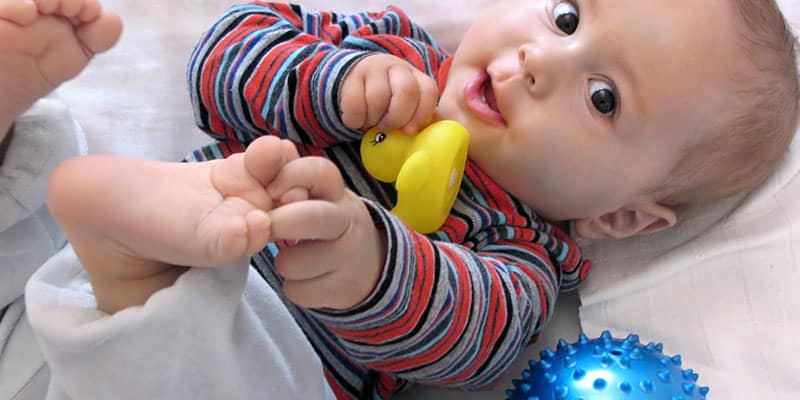Soft vinyl or plastic mattress covers and protectors are sold everywhere, for every size of mattress—and you don’t want one. Here’s why.
They contain phthalates, a class of chemicals used to soften plastics and make them flexible. Today’s textile manufacturers can make vinyls and other plastics look and feel remarkably like fabrics by adding the right mix of chemicals, including phthalates. But the convenience of this kind of mattress protection isn’t worth its cost to your health.
Phthalates raise the risk of cancer, reproductive disorders and developmental issues. They’ve been implicated as one cause of asthma and allergies. And they’re also believed to be endocrine disruptors, according to the National Institutes of Health. That means as they off-gas or degrade into your home environment, they alter your body’s delicate natural balance of hormones. This leaves you more vulnerable to a variety of diseases over the long term.
Rubber duckies
Phthalates are risky for anyone, but this danger is especially troubling because plastic and vinyl covers or protectors are used on most crib and toddler mattresses, to which children are directly exposed to for 10 to 12 hours per day.
Because of their small size, rapid growth, and the much greater volume of air they breathe, infants and young children are much more vulnerable to the effects of household chemicals than adults are. And the earlier they’re exposed, the more years they have ahead to develop health problems.
The Consumer Products Safety Commission has outlawed the use of phthalates in infant pacifiers, soft rattles and teethers. Unfortunately, however, they’re still prevalent in most soft plastic toys and many other household items—including mattresses.

Heating up the risk
A new worry is that chemical researchers have recently discovered that higher temperatures increase the emissions of phthalates from vinyl mattress covers. Although the study focused on crib mattresses, it’s smart to assume that the same would be true for any mattress—child’s or adult’s—with this type of cover.
In hot weather or in non-air-conditioned spaces, these emissions can soar well above a common (and unhealthful) level of indoor air pollution to very unsafe levels, the researchers say. A phthalate-infused casing or cover may be convenient or cheap, but there’s much more than convenience at stake.
Better choices
If you need a moisture pad for a baby’s crib, this natural wool crib mattress pad is the best way to go. Although it’s not absolutely moisture-proof in the way plastics and vinyls are, when a wool textile is correctly woven for this purpose, moisture will bead up on its surface and not sink through. (You’d have to ignore a puddle for a very long time before it could; in normal circumstances a damp pad would have long since been changed or cleaned.)
The pad is as soft as a favorite blanket and more importantly, it’s phthalate free. Bear in mind that you can avoid other unwelcome chemicals in your baby’s bed by choosing a natural crib mattress such as the Savvy Baby.
For older children’s and adult’s beds also, natural wool mattress pads make great protectors. Wool is breathable, which adds to the comfort of any bed. Some people leave wool pads in place to protect mattresses from dust or damp, and top them with machine-washable organic cotton pads for regular laundering. Others choose either the wool or cotton pad alone. Some shrinkage must be expected if wool pads are machine washed, but with most machines, it’s not enough to compromise the pad’s function or comfort. (Most people don’t sleep on the outer inch or two of a mattress.) Still, take note of product care instructions before making your choice.
Even without kids in the house, a sloshed cup of coffee or aging pet on the bed might at some point mean an unfortunate accident. But when there’s little risk of moisture, an organic cotton pad could be all you’ll need.
You can sleep comfortably and protect your mattress investment—without exposure to phthalates.
